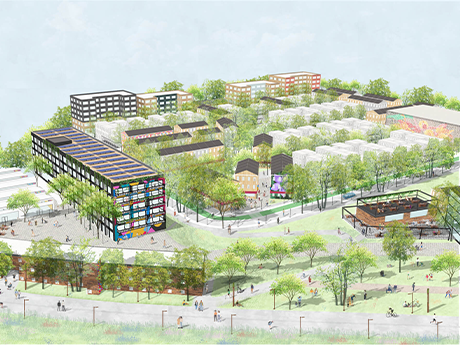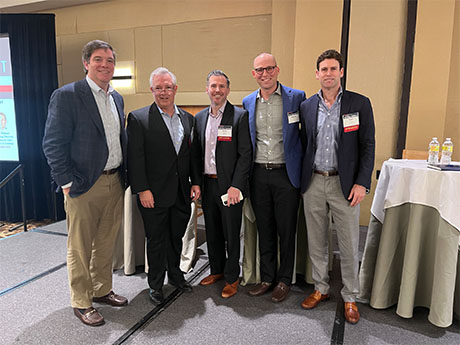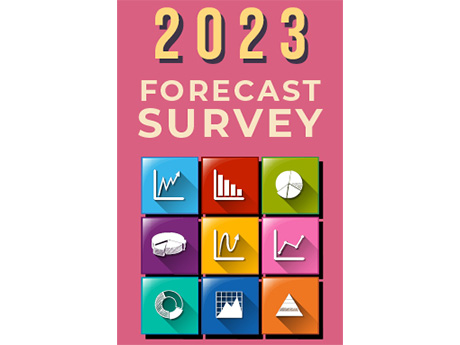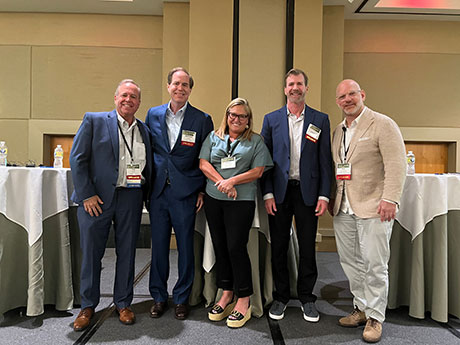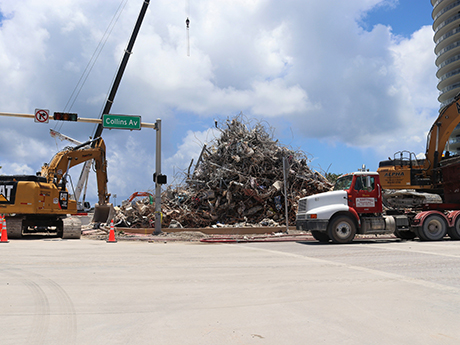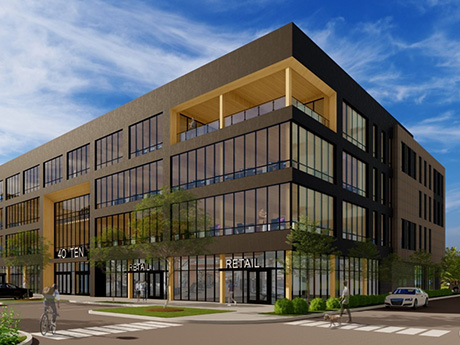— By Dennis Richards Jr., Atlanta BeltLine Inc. — Rapid development of Class A apartments across major U.S. cities has left many community leaders struggling to create affordable housing for its citizens. Atlanta is no exception. City leaders recognize the demand for new housing supply, but they know that once new developments are delivered to areas in and around formerly underserved and underinvested neighborhoods, long-time residents are at greater risk of displacement due to rising rents or rising tax assessments. As we look to the future, it’s imperative that development projects advance equitably. Here in Atlanta, Mayor Andre Dickens pledged about $59 million from the city and in May assembled the Affordable Housing Strike Force, a task force comprised of leaders from government and nonprofit sectors. The group’s goal is to build and preserve 20,000 affordable housing units while also preventing the displacement of city residents. According to the city of Atlanta, 1,739 affordable units have been built and 3,940 are under construction since the mayor issued this mandate. Executing the Vision The Atlanta BeltLine Inc. (ABI) is the agency responsible for developing the Atlanta BeltLine, a 22-mile, multiuse trail that runs through the core of the city. This project includes programming …
Southeast Feature Archive
Interest Rate Volatility Will Slow Multifamily Investment Activity in 2023, Says InterFace Panel
by John Nelson
ATLANTA — A lot can happen in a year. This time a year ago, the 10-year Treasury yield was at 1.489 percent, the federal funds rate was at a range of 0 to 0.25 percent and SOFR was at 0.05 percent. As of this writing, those three benchmark interest rates are at 3.527 percent, 3.75 to 4 percent and 3.82 percent, respectively — none of which are within 200 basis points from a year ago. Debt capital has become decisively more expensive, and officials at the Federal Reserve are signaling that more rate hikes are coming. For the U.S. multifamily sector, the result is that investors are increasingly becoming “pencils down” until interest rates find their footing. “We haven’t had much [investment] sales volume, as you can imagine, in the third or fourth quarter,” said Bennett Sands, managing development director at Wood Partners, an Atlanta-based apartment developer. “Looking ahead, our sales volume in 2023 will be down 50 percent [from 2022], if we’re lucky.” “It has been pretty quiet the past few months, and we expect that to continue for the next few months as well,” added Andrew Zelman, vice president of acquisitions at GID, a multifamily and mixed-use developer …
FeaturesHeartland Feature ArchiveNortheast Feature ArchiveOtherSoutheast Feature ArchiveTexas & Oklahoma Feature ArchiveWestern Feature Archive
Forecast Survey: What’s Your Take on Commercial Real Estate in 2023?
by John Nelson
The editors of REBusinessOnline.com are conducting a brief online survey to gauge market conditions in 2023, and we welcome your participation. The survey should only take a few minutes to complete. Questions range from property sectors that you are most bullish on heading into 2023 to trends in deal volume to your outlook for interest rates. The results of our 12th annual survey will be collated and published in the January issues of our regional magazines. Conducting these surveys is part of our mission at France Media to provide readers with indispensable information, and we couldn’t do it without your help. To participate in our broker/agent survey, click here. To participate in our developer/owner/manager survey, click here. To participate in our lender/financial intermediary survey, click here. (Note: Please remember to click on “done” to properly submit the survey.)
ATLANTA — After a quarter characterized by rising costs of living and mounting inflation, “recession” is the word on everybody’s lips. But Roger Tutterow, professor of economics at Kennesaw State University in Georgia, states that “it is not a foregone conclusion that we’re in a recession today or that we’ll get there in the next several months.” The official definition of a recession is not two consecutive quarters of negative growth in gross domestic product (GDP). “Most of the time it works out that way,” Tutterow said, “but the technical definition of a recession is a period of diminishing activity in production, trade, employment and income.” Tutterow noted that looking at these four components of economic activity and comparing them to today indicates a softening economy and an elevated risk of recession, but he does not believe that the economy is necessarily contracting. He puts the risk of a recession in the next 12 months as roughly one chance in three. Tutterow’s assessment of the current state of the economy and his near-term outlook came during a keynote address Tutterow delivered at the ninth annual InterFace Seniors Housing Southeast, a networking and information conference hosted by France Media’s InterFace Conference …
ATLANTA — Delays in the arrival of building materials — everything from windows and roof trusses to microchips for electrical panels — is one of the biggest hurdles slowing down new seniors housing developments, according to Kristin Kutac Ward, CEO of Solvere Living. Ward’s comments came during the ninth annual InterFace Seniors Housing conference. The event, which took place Aug. 17 at the Westin Buckhead in Atlanta, was hosted by France Media’s InterFace Conference Group and Seniors Housing Business and drew 324 attendees. Joining Ward on the development panel was Tod Petty, vice chairman with Lloyd Jones Senior Living; Matthew Griffin, senior vice president, eastern states, with Griffin Living; and Jim Vogel, president of Solvida Development Group. Rick Shamberg, managing director of Scarp Ridge Capital, served as the moderator. Despite the challenges in today’s building environment, there is pent-up demand and plenty of excitement regarding new seniors housing projects, said Ward. As baby boomers age, there will be a need for seniors housing care for about 50 million more people in the U.S., according to Shamberg. There’s ample opportunity for developers to fill that void in housing. According to Petty, the need for seniors housing units will be most pronounced …
Seniors Housing Operators See Rapid Rise in Online Leads and Universal Workers, Say InterFace Panelists
by John Nelson
By John Nelson ATLANTA — Property managers rely on various tools and methods to boost occupancy at their seniors housing facilities. One common avenue is for operators to have reliable online lead generators that connect their sales teams to potential residents and their families. Digital platforms in the seniors housing space like A Place for Mom and Grow Your Occupancy are churning out such leads for sales teams, and operators are saying that it’s a double-edged sword because they are coming in at a rapid clip. “We love the leads but we have one salesperson per community typically,” said Don Bishop, CEO of Tallahassee, Fla.-based SRI Management. “The response time is important. Some leads take a long time to prospect and work through the system. Having too many leads is a good challenge, but it is a challenge.” Bishop’s comments came during the operations panel at the ninth annual InterFace Seniors Housing Southeast, a networking and information conference hosted by France Media’s InterFace Conference Group and Seniors Housing Business. The event was held Wednesday, Aug. 17 at the Westin Buckhead hotel in Atlanta. Pilar Carvajal, founder and CEO of Innovation Senior Living, said that her firm has been discussing creative …
Borrowers, Lenders Reach an ‘Inflection Point’ in the Wake of Rising Inflation and Interest Rates
by John Nelson
By John Nelson The period between mid-June and mid-July has become a pivotal moment in the capital markets world as commercial real estate borrowers and lenders navigate inflation levels and interest rates not seen in decades. Scott Cook, commercial real estate market manager with TD Bank’s Charlotte office, says that borrowers and lenders are reshaping the market on the fly, and it’s too early to tell if the elevated capital costs are going to drastically suppress borrower demand. “We’re at an inflection point: the natural, healthy tension between borrowers and lenders where borrowers want more but lenders want to give less,” says Cook. “I don’t know that we’ve seen the full effect yet. Generally speaking, borrowers are still looking for business as usual. They’re aware of the rate hikes but still believe in the product, and certainly there’s overwhelming demand. We’re redefining it as we speak, it’s too early to call.” Cook says that the first true “wake up” call was when the U.S. Bureau of Labor Statistics (BLS) relayed that the Consumer Price Index (CPI), one of the standard inflation measurements that tracks price changes for goods and services, had increased 8.6 percent in May, which is the highest …
One Year Later: Surfside Collapse Inspires Newly Passed Florida Legislation Addressing Structural Integrity
by John Nelson
By Jim Prichard of Ball Janik LLP The 13-story, L-shaped Champlain Towers decorated the Surfside coastline. In the early morning of June 24, 2021, the pool deck suffered a partial collapse, triggering more destruction in the structure’s central section and eastern wing. In less than 30 seconds, approximately half of the 136 units in the building were destroyed, leaving 98 residents dead and establishing a horrific legacy as one of the deadliest structural engineering failures in U.S. history. In the wake of the tragedy, Miami-Dade County Mayor Daniella Levine Cava ordered an immediate audit of all high-rise buildings that were more than 40 years old and five stories tall constructed by the developer. The attention to South Florida development prompted a review of hundreds of older buildings. There was also an onslaught of editorial investigations, including features by The New York Times, The Wall Street Journal and the Miami Herald. Florida International University conducted its satellite analysis of the site as well. All investigations, first-hand experiences, and post-collapse engineering findings reported that there had been concerns about the structural integrity of the building and that the collapse was based on faulty construction and deterioration. As a law firm, our biggest …
Developers Turn to CPACE Financing to Achieve Better Returns Amid Rising Costs Environment
by John Nelson
By Jason Schwartzberg, President of MD Energy Advisors The real estate development industry has been negatively impacted by a continued series of hardships over the past 24 months, including rapidly escalating construction costs, breakdowns in the supply chain, inflation, labor shortages, rent freezes and, most recently, rising interest rates. Many projects are still managing to receive financing and get underway, but the current environment presents significant challenges for owners and investors to place a project under contract, achieve entitlement, obtain construction financing and then build, deliver and stabilize the development. For a project to move from concept to completion, it must first meet the internal rate of return (IRR) or hurdle rate, also known as the “minimum acceptable rate of return” (MARR). Developers and investors maintain various thresholds for the definition of an acceptable IRR, but the return of the project must ultimately be commensurate with the risk undertaken to complete it. Variables associated with construction and market risks also factor into the equation. There are several methods to increase a project’s return in order to reach a desired hurdle rate, some of which are outside of the developer’s direct control. Major inputs that significantly impact returns include the cost …
Build-to-RentConference CoverageDevelopmentFeaturesMultifamilyNorth CarolinaSingle-Family RentalSouth CarolinaSoutheastSoutheast Feature Archive
Speed to Market is ‘Almost the Only Priority’ for Multifamily Developers Looking to Avoid Cost Risks, Say InterFace Panelists
by John Nelson
CHARLOTTE, N.C. — Multifamily developers are pushing their chips in and aggressively looking for new development deals, especially for sites in and around high-growth markets in the Southeast. Michael Tubridy, senior managing director of Crescent Communities, said his firm isn’t leaving anything to chance and is looking to move quickly on development opportunities. “We’re trying to get as many units on the ground today as possible, because tomorrow will be more expensive,” said Tubridy. “I like the chances of today’s cost environment a lot better than I like the unknown of where we’ll be a year from now or two years from now. Putting a premium on speed to market is something that we are much more focused on; it’s almost the only priority right now.” Tubridy’s comments came during the development panel at InterFace Carolinas Multifamily 2022. The half-day event was held on April 14 at the Hilton Uptown Charlotte hotel and attracted more than 260 attendees from all facets of the multifamily industry in North Carolina and South Carolina. Michael Saclarides, director of Cushman & Wakefield’s Multifamily Advisory Group, moderated the discussion. Crescent Communities is far from the only multifamily developer pursuing ground-up construction opportunities in earnest. In …


